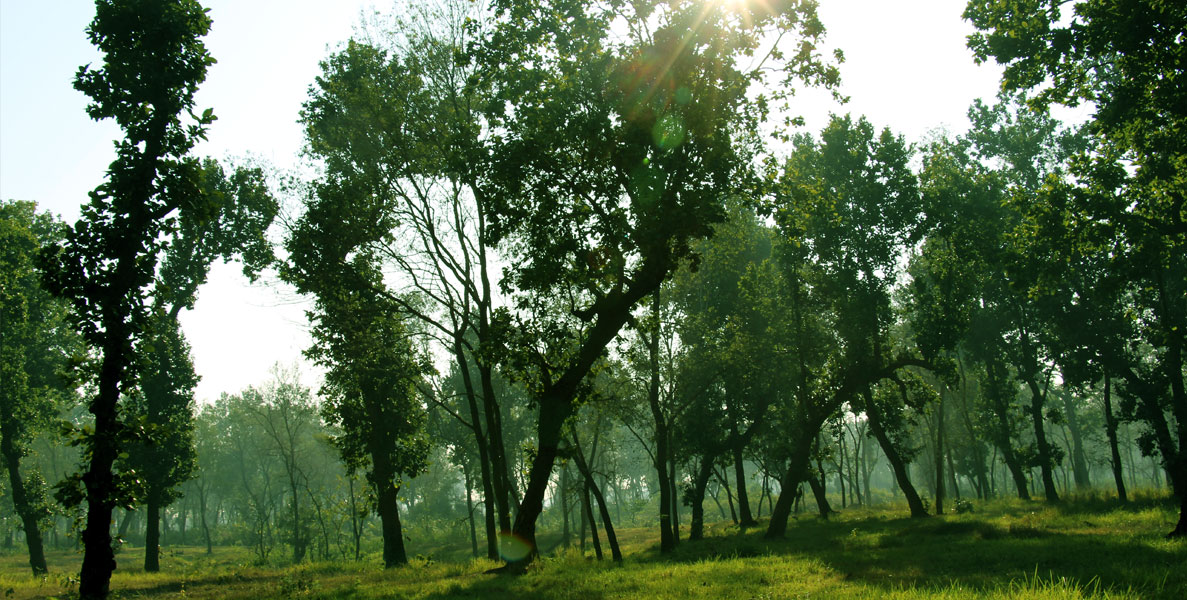

Ritu Gurung, WCN | January 06, 2020

Bimala Sinjali runs a small tea shop in her house. She lives near Sitapokhari Community Forest in Daunne, Nawalparasi around 250 kms from the capital. She has some cattle and goat and for fodder she depends on her community forest. Bimala has always valued the importance of the forest but had never had an opportunity to do something for it. For her forest is very important since she believes it provides her with oxygen and fuel for her household and fodder for her livestock.
Like her there are many women in Nawalparasi who spent hours in the forest collecting fuelwood or fodder for the living. These women know the value of a forest so they do not only use the forest for their benefit but also take care of the trees.
When WCN's Climate Change and Natural Disaster Action Program was introduced in the seven community forests of Nawalparasi district women had shown an eagerness to bring into use the barren lands located in their community forest. But they didn't know how to go about it. Today Bimala is the chair of the women group formed by the women users of Sitapokhari Community Forest. There are now seven registered women groups with 200 women as members who are actively involved in the cultivation of Lemongrass, Citronella, Palmarosa and wild Turmeric. These groups also organize tree plantations once a year. Trees planted are mostly high value timber trees and fodder trees. Fodder trees so that they can collectively harvest fodder for their livestock and on the long run harvest timber trees for income as well as maintain the balance of the ecosystem.
The forest management system led by local communities was introduced in 1978 with a vision to encourage active participation of the local community in managing the village forest in order to improve the livelihood of the community. Community forestry in Nepal is widely known as one of Nepal’s success stories in sustainable utilization of forest and its products. It has not only brought an environmental change but has also introduced social change to the poor and disadvantaged groups. It has played a significant role in empowering the rural forest users especially women in economic, social and political terms. More than 35% of Nepal’s population is involved in the management of the community forest. Till date 22500 Community forest user groups (CFUG) have been formed. Around 18,13,478 ha of national forest have been handed over to local community for management under community forestry program. Community forests is a priority program for the government of Nepal (Ministry of Forest and Soil Conservation, MoFSC) which is continuously working towards achieving sustainable management of forest resource by converting accessible national forest into community forest.
The Federation of Community Forestry User’s Nepal (FECOFUN) has also been established which is a representative organization of CFUGs across the country that has been active in promoting and protecting the rights of the community forest users. WCN’s program has also contributed in supporting the women in their household income as well as contributed in preserving their forests. Women who were always underrepresented now have their say and are heard. Their participation in decision making has improved and their interest on different forest based enterprises has enhanced are now developing new schemes to pursue.
With women like Bimala, the women groups are now in the forefront in preserving their forests.
For more information please write to ritu@wcn.org.np
House No. 135, Nayabasti Marg, Baluwatar, Kathmandu-4
Tel: +977 1 437 5460, +977 1 437 5267
Email: mail@wcn.org.np
© Wildlife Conservation Nepal . Developed by Eleven Pixels.